We have friends who were born in Krakow in Poland and it has always been on our travel wish list. Our 19th wedding anniversary in November seemed the perfect excuse. Following a flight of just over two hours from Manchester and a 20-minute taxi ride, we reached our hotel in Rynek Square.
Rynek Square, also known as, ‘The Main Square,’ is the largest medieval square in Europe, measuring 229 yards by 231 yards; there has been a square here since 1257. It is the hub from which a network of streets and squares form the city, at one time protected by gates around the perimeter.
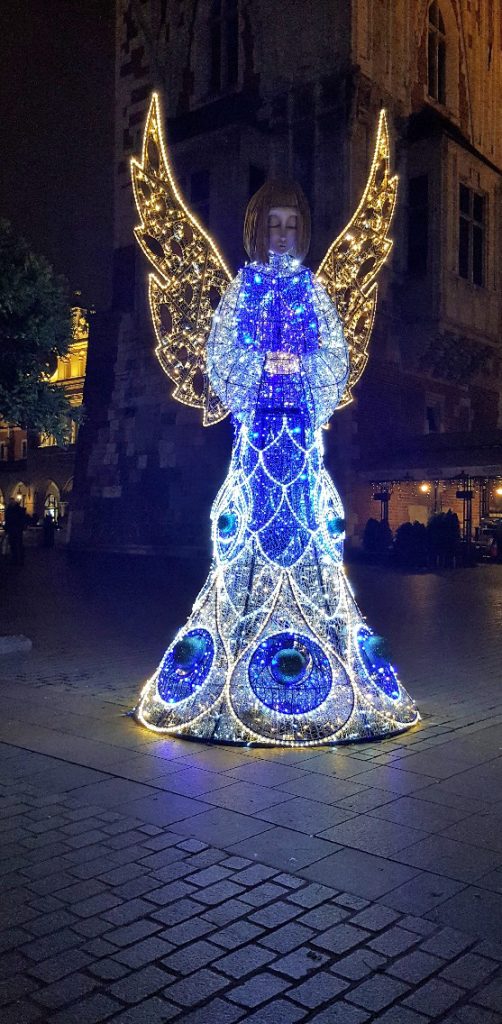
We arrived at midnight when night workers were filling the Square with beautiful Christmas lights, painstakingly fitting log cabins, erecting a huge Christmas tree, and securing the most beautifully lit angel decoration, standing around 30 feet high. Horses hooves resonated on the cobbles as tourists were taken around the old town in lit snow-white coaches befitting any latter-day Cinderella. It felt like we were part of a scene from a fairy-tale, where elves were working to have everything in place for the morning.
Actually these ‘elves’ worked every evening that we were there and each morning brought new delights of holly boughs, trees dressed in golden and white lights, Christmas baubles embracing the ornate street lamps…the whole scene was magical.
On our first morning in Krakow, the temperature dropped to minus 5 degrees Celsius, as we began our adventure we joined the people walking through the Main Square, all wrapped up in hats and woolly scarves, seemingly blissfully unaware of the weather, but as the mercury in the thermometer can drop to -25°C it is hardly surprising!
Over the next two days we explored Rynek Square, the Jewish Quarter and Wawel Castle and Cathedral. There are lots of tours on offer and while many people book online it is still easy to book a tour from a tour stands or Tourist Information Office. We decided to tour on foot.
The Cloth Hall stands in the middle of the Square where many stone vaulted arcades hold stalls selling a variety of hand made goods, together with warm clothing and fur rugs. Tourists needing extra layers can easily find warmth in the clothing on offer or shelter in the myriad of tea shops and bars offering delights such as hot beers of ginger or fruit origin together with the all-important vodkas. There are churches and buildings around the Square including the famous St Mary’s Basilica. We read afterwards that we should have entered by the back door and paid a fee to go in, in innocence we walked in through the front door, not realising it was for worshippers only, but we were still able to see the famed altar screen completed between 1477 and 1489 by Nuremberg sculptor Veit Stoss.
Walking between the Cloth Hall and St Mary’s Basilica tourists sometimes miss the fact that hidden away a few metres underground there are treasures to be seen and knowledge to be gained regarding Krakow’s past. Following a five-year archaeological study on the eastern side of the Square, the Rynek Underground, Podziemia Rynku, was opened in 2010. The exhibition incorporates actual stretches of ancient road ways, fragments of houses, furnaces and factories from past centuries; together with interactive explanations and information about Poland’s elegant former capital and its turbulent past.
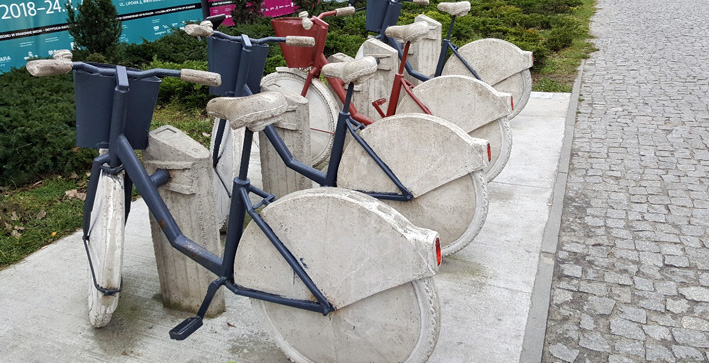
If food comes before your thirst for knowledge look no further than Rynek Square, until of course you venture further out to the Jewish Quarter where even more culinary delights and fabulous street food awaits.
Some of the restaurants in the Main Square have been eateries for centuries, the oldest is Wierzynex Restaurant. It occupies two renaissance houses and serves quality polish dishes. Tourist guide books tell us that a banquet was served here in 1364. Further along the Square is The Dobra Kasza Nasza, famous for its peasant derived food, of groats in varied dishes at exceedingly low prices and in between there are a host of restaurants offering meats, pizzas, fish and vegetarian options. Not forgetting the national dish of ‘bigos,’ a chunky stew of pork, other meats, sausages, cabbage, potatoes, onions, spiced with herbs and served with lashing sour cream and the all-important Polish dumplings (pierogi) of course! Even the McCafé at McDonalds Restaurant, just off the Main Square, has a rose in a vase on each table.
All the bars and restaurants are bedecked in gorgeous fairy lights and Christmas trees, not a piece of tacky tinsel in sight. Many of restaurants offer alfresco dining, no doubt in the summer diners would be seated under huge umbrellas to escape the heat of the day but in winter it’s all about cosiness. Many establishments provide comfort and warmth of heaters and warm blankets within glass panelled structures, each decorated with twinkling lights, offering not only great food served from their main kitchen, but also great views of the Main Square.
Our personal favourite was Restauracja Ratuszova under the Ratuszova Tower which is the only remnant of the old Krakow Town Hall.
A 20-minute walk from the old town takes you to the Wawel Castle and Cathedral, they both sit high on the ‘Wawel’, a limestone hill overlooking the Wisla River and there is a separate admission price for each. There has been a royal residence here since 1038.
Beside the castle is Wawel Cathedral the scene of many state and royal occasions through the centuries. Folklore tells of a dragon that terrorised the city from its cave beneath the castle. Whilst the dragon was only evident in the gift shop, the steep steps of the Bell Tower of the Cathedral and its confined space was enough to challenge unsuspecting me! I did however have the opportunity to touch Sigismund’s Bell, the largest bell in Poland which is housed in the tower. Legend has it that touching with your left hand grants you a wish.
Another 10-15-minute walk and you enter the ‘Kazimierz’, the historic Jewish District, with its array of synagogues, Jewish museums, cultural centres and cafe restaurants. Krakowska Wolica Café was my perfect find with elegant cakes and great coffee. Equally wonderful was the exhibition of art by artist, Maggie piu, a mixture of fashion and illustration. For my husband, Bob, Plac Nowy held his street food favourite. Plac Nowy means New Square and is a central small circular building, today it is filled with local food stalls, but it was once the Jewish Slaughter House. Here, for the amazing price of 6 zlota, around £1.10 you can buy a Zapiekanki, an almost foot long halved baguette, topped with such delights as mushrooms and lashings of cheese and finished with tomato sauce. Just around the corner is Jozefa street which has bars and restaurants galore with tasty local dishes available at spectacularly low prices.
Within this ancient city there is a poignant reminder of the horrors of the Nazi concentration camp of Auschwitz, where, over a million Jews from Poland and other parts of Europe, lost their lives. There are many tours available and I believe the tours spend around four hours there. We did not wish to go, instead, we chose to visit Schindler’s Factory, where for many goodness triumphed over evil.
Oskar Schindler’s Factory is about a 15-minute walk from the Jewish District. The former administration block is now a branch of the Historical Museum of the City of Krakow. Inside there is an exhibition of Krakow under the 1939-1945 Nazi Occupation. First collaborating with the Nazi party, Oskar Schindler became the saviour of over 1000 of his Jewish workers. Even if you don’t pay to go around the exhibition there are still interesting exhibits in the foyer and outside there are information plaques and photographs of the people saved by Schindler. In 1993 Steven Spielberg directed the film ‘Schindler’s List,’ said to be a true reflection of happenings of the time. Next to the factory is Krakow Museum of Contemporary Art which has a great café.
The two large shopping malls of Galeria Krakowska (opposite the main railway station) and Galeria Kazimierz, a little further out of the city; tend to look and sell brands like any other European shopping malls. The vintage shops on Starowislna street, on the way back to the old town are treasure troves of interesting finds. Some shops sell goods at the one price of around 20p an article, the larger vintage shops sell anything from furs to ski wear, suits to evening wear. I resisted the urge to spend 69 zloty, about £15, on a gorgeous oatmeal coloured trench-style cashmere coat.
Sadly our Christmas break, away from the madness of Christmas preparations was at an end. We will be back, no doubt one Spring time, when we will travel into middle earth and visit the Wielieza Salt Mines where salt has been extracted for more than 700 years.
We will eat delicious food on Jozefa Street in the Jewish District, we will sit and drink coffee and vodka in the smart outside cafes and restaurant on Rynek Square and I might retrace my steps and find that cashmere coat!

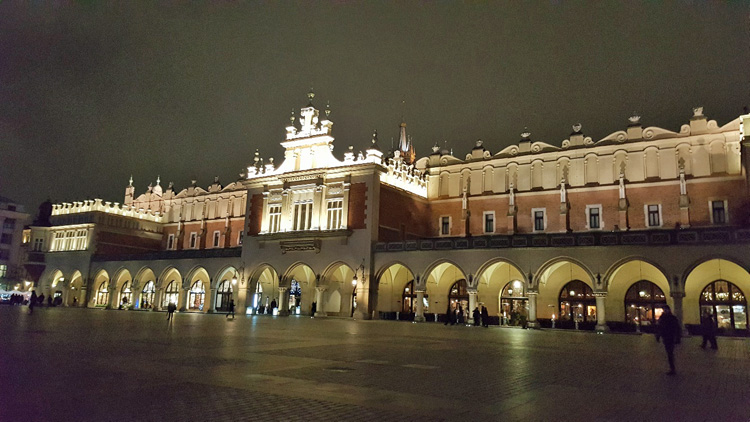


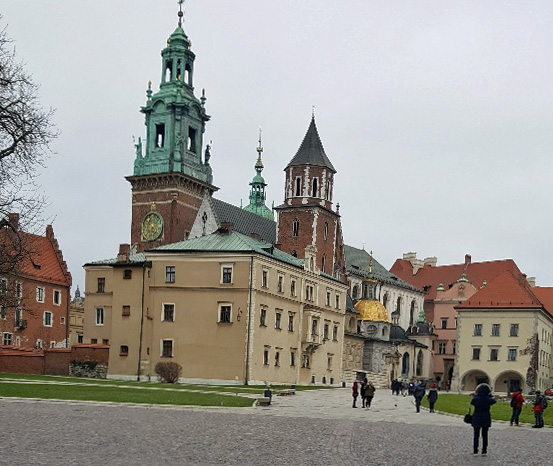

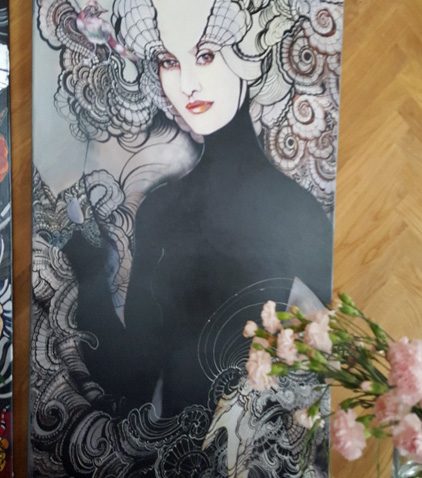
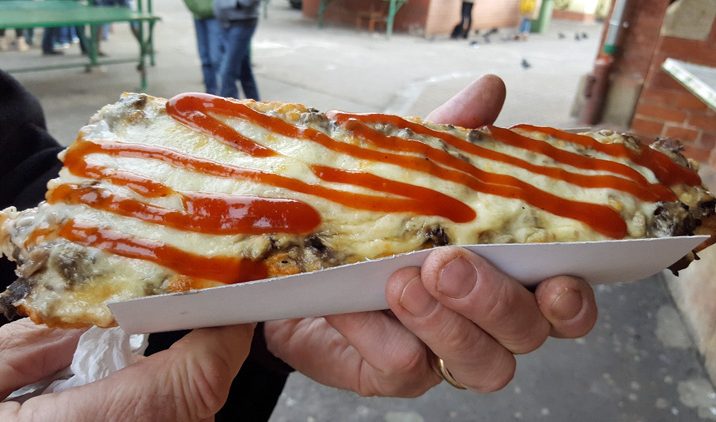
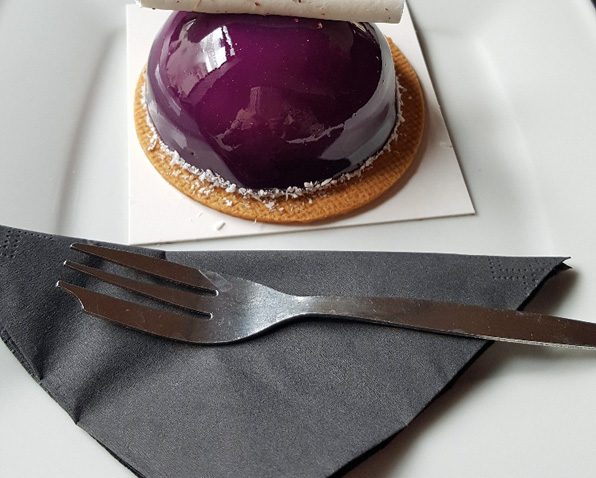
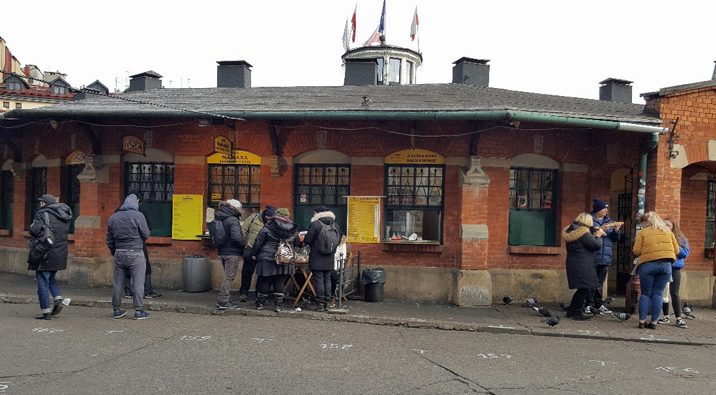
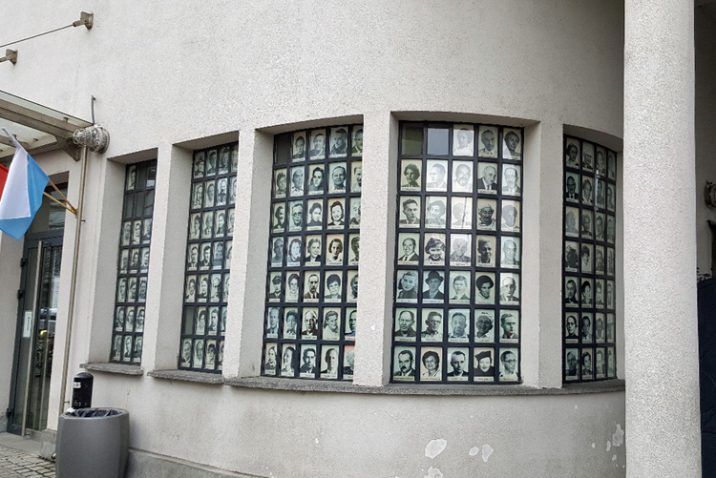
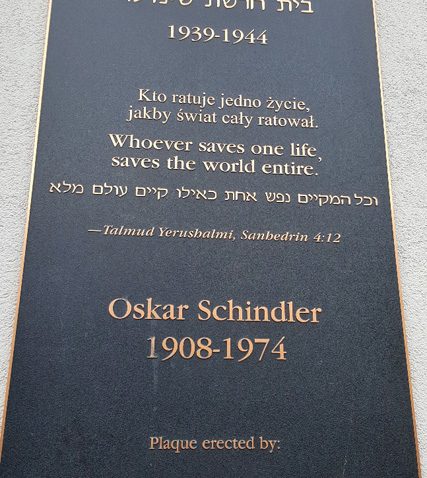
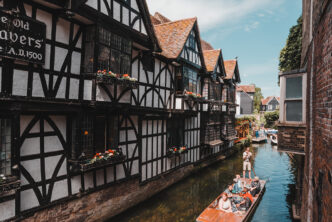

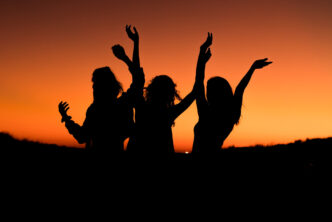

Nice post,